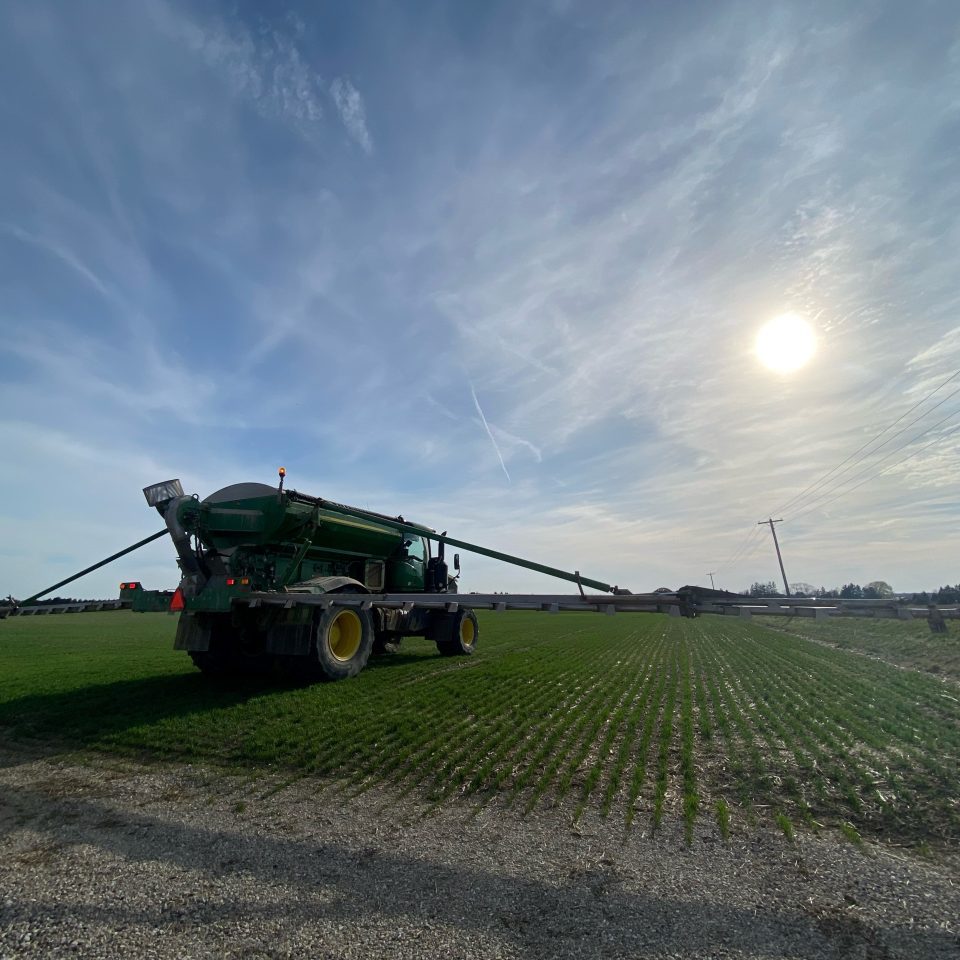
Has the recent wet conditions been a positive for your field or has the excessive moisture impacted your fields? In order to ensure effective disease management during these conditions it is crucial to adjust your fungicide application strategies. I
Let’s take a look at what you should be considering when choosing between aerial and ground spraying techniques in wet conditions and how they can impact the success of your applications.
Aerial Spraying in Wet Conditions:
Aerial spraying involves applying fungicides using aircraft, offering advantages in terms of speed and coverage over large areas. However, in wet conditions, there are a few considerations to keep in mind:
- Weather Conditions: Aerial spraying is highly dependent on weather conditions. Rain and high humidity can impact the effectiveness of aerial applications. Ensure that there is a sufficient window of dry weather following the application to allow for proper fungicide adherence and drying.
- Drift: In wet conditions, the risk of spray drift increases. Drift occurs when spray particles are carried by wind currents and can result in off-target deposition, potentially affecting neighboring crops or sensitive areas. It’s important to follow proper application techniques, such as adjusting nozzle settings and using drift-reducing additives, to minimize drift and ensure effective coverage.
- Visibility: Rain and fog can reduce visibility, making it challenging for pilots to accurately target the intended areas. Poor visibility increases the risk of uneven application or missed spots. If visibility is compromised, it may be advisable to delay aerial spraying until conditions improve.
Ground Spraying in Wet Conditions:
Ground spraying involves applying fungicides using equipment mounted on vehicles or manually operated sprayers. In wet conditions, ground spraying offers certain advantages:
- Better Coverage: Ground sprayers provide closer proximity to the target area, allowing for better coverage and penetration of the fungicide into the crop canopy. This can be particularly beneficial in wet conditions when foliage may be denser and can impede aerial spray penetration.
- Reduced Drift: Ground spraying can minimize the risk of spray drift compared to aerial spraying. The spray application can be more accurately targeted to the crop and adjusted to the field conditions, reducing the potential impact on neighboring areas.
- Flexibility: Ground sprayers offer more flexibility in adapting to changing field conditions. They can navigate uneven terrain, which may be challenging for aircraft, and can be easily adjusted for varying crop heights and densities.
Choosing the Right Approach:
When deciding between aerial and ground spraying in wet conditions, consider the following factors:
- Field Size: Aerial spraying is often more efficient and practical for large, open fields with minimal obstacles. For smaller fields or areas with irregular shapes and obstacles, ground spraying may offer better precision and coverage.
- Disease Severity: If the disease pressure is high and rapid coverage is critical, aerial spraying may be preferable. However, if disease severity is localized or manageable, ground spraying can be a cost-effective and efficient option.
- Equipment Availability: Assess the availability and suitability of equipment for both aerial and ground spraying. Consider the cost, logistics, and expertise required for each approach.
- Local Regulations: Ensure compliance with local regulations and restrictions concerning aerial and ground spraying. Some areas may have specific guidelines or limitations on spraying methods in certain weather conditions.
Whether opting for aerial spraying or utilizing ground sprayers, always follow recommended application practices and safety guidelines to protect your crops and the environment.
Wishing you success in your disease management efforts! Any questions, please get in touch! Let’s grow together.